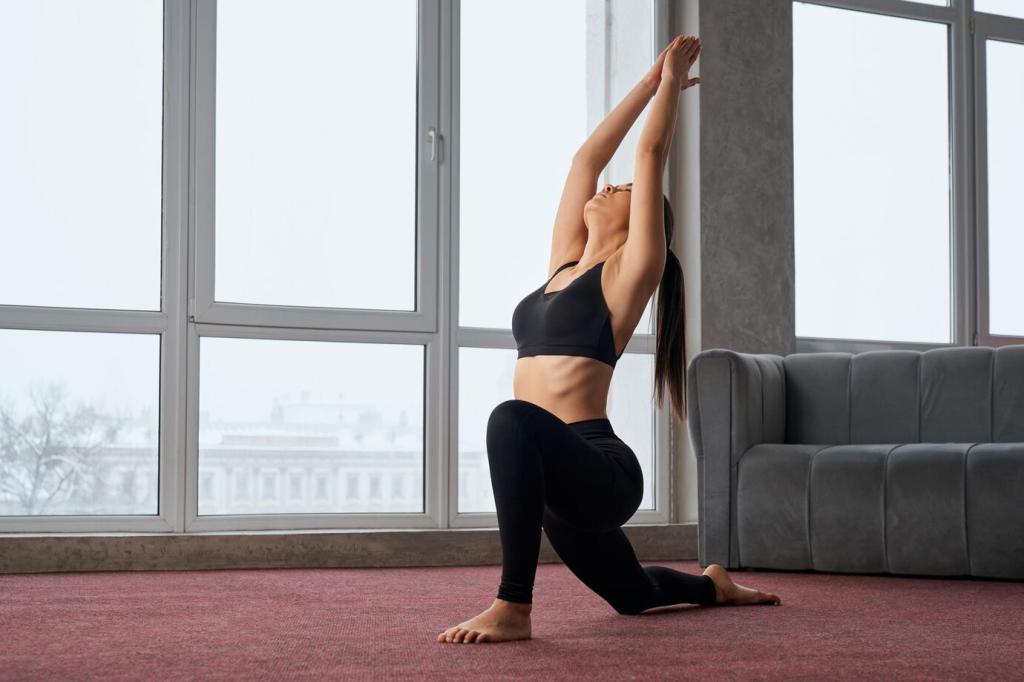Bandhas and Core Intelligence
Imagine gently lifting the pelvic floor like a small balloon rising, especially on your exhale in Warrior II or Triangle. Avoid overgripping the glutes; instead, think deep, refined activation that steadies knees and sacrum. Try five breaths per pose and notice steadier balance. Share your clearest activation cue.
Bandhas and Core Intelligence
On an empty stomach, exhale completely, then draw the abdomen up and back under the ribs without inhaling. Hold gently, release slowly, and rest before repeating. Start with three soft rounds. Many report a light, awake feeling before coffee. Not for pregnancy or medical concerns. What sensations surprised you?




